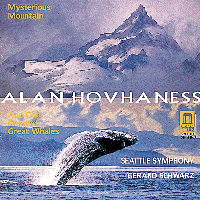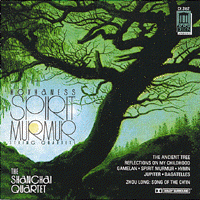He is the most original, and yet the most traditional, of contemporary composers. A musician-mystic, he explores the transcendental realm, using music as a link between the physical world and a metaphysical cosmos. In search for new insights, Hovhaness takes the cultures of non-Western people as his point of departure, while employing the tools of Western music as his frame of reference.
Hovhaness' music is a kaleidoscopic amalgam of stylistic expressions. Rather than trying to represent or imitate a specific national idiom, he lets his imagination roam with varying aspects of a particular culture, thus being able to attain and communicate a higher spiritual elevation. Despite diverse stylistic idioms, certain elements in Hovhaness' music remain constant. The most persistent is his visionary outlook, a view of life actually more Eastern than Judeo-Christian.
Alan Hovhaness was born Alan Vaness Chakmakjian in Somerville, Massachusetts, on March 8, 1911. A precocious child, he composed a short organ piece at the age of four. By his twentieth birthday, following studies in piano and composition, he had created several large-scale, conventional works.
During his early thirties, Hovhaness carefully scrutinized his personal values and began to search out his Armenian heritage. He became associated with the Greek mystic painter, Ermolaus Ionides, whose influence gradually changed the direction of Hovhaness' outlook on life and helped him retrace his roots. He was asked to serve as organist at St. James Armenian Church in Watertown, Massachusetts, which led him to become involved in an intensive study of Armenian music, particulary that of Komitas. Destroying most of his previous output, he began to create with renewed vision, producing works immersed totally in his Armenian heritage.
A further broadening of Hovhaness' music horizons occurred during the 1950s. The influence of various Oriental idioms added a new dimension to his already eclectic musical vocabulary. Very much in demand both as a composer and conductor of his works, Hovhaness traveled extensively throughout the United States as well as India, Korea and Japan, where he studied with Masataro Togi, a great Gagaku musician, and learned the principles and practical aspects of Oriental art. (copyright 1998 HOS)
Click the album to visit the Delos site for Hovhanness' work.
 Click here for information on ordering Hovhaness' magnificent music.
Click here for information on ordering Hovhaness' magnificent music.
 Get your own Free Home Page
Get your own Free Home Page